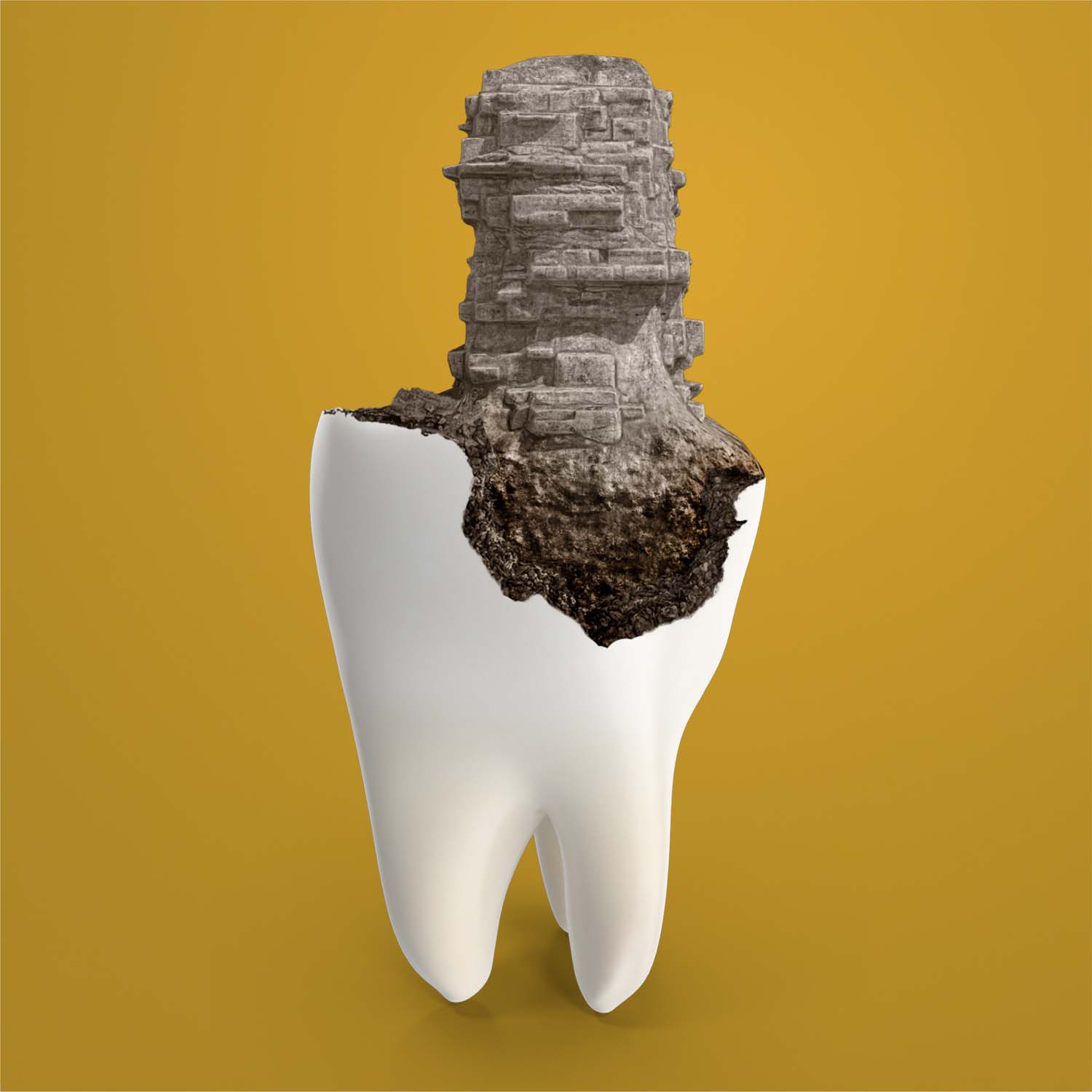- Introduction
- Dental Erosion: The Invisible Enemy
- Food and Drink: The Main Villains
- Daily Habits That Can Save Your Teeth
- Modern Technologies and Treatments
- The Importance of Regular Visits to the Dentist
- Conclusion
- Scientific references
Introduction
Did you know that your teeth are like majestic cliffs, defying time and the elements? But even the most imposing structures can be slowly eroded by the constant action of the elements. In your mouth, this erosive force is represented by acids from the food and drink you consume every day.
Imagine that every sip of soft drink or bite of citrus fruit is like a small wave that, day after day, wears away the surface of your teeth. Tooth erosion is this invisible, persistent and relentless force, gradually eroding tooth enamel and leaving teeth vulnerable and sensitive.
But don’t despair! Just as cliffs can be protected against natural erosion, your teeth can also be strengthened and defended against this constant wear and tear. Let’s explore how you can build effective barriers and adopt habits that preserve the integrity of your teeth, keeping them strong and healthy for many years to come.
Dental Erosion: The Invisible Enemy
Tooth erosion is the progressive loss of tooth enamel caused by non-bacterial acids. Unlike tooth decay, erosion is the result of direct chemical action on the tooth surface. A study by the Academy of General Dentistry shows that around 30 per cent of the population suffers from tooth erosion, often without being aware of the problem (Lussi et al, 2011).
Initial symptoms can include increased sensitivity to hot, cold or sweet foods, and a yellowish appearance to the teeth as the protective enamel layer wears away, exposing the underlying dentin.
Food and Drink: The Main Villains
Acids in certain foods and drinks are the main culprits in tooth erosion. Soft drinks, energy drinks, citrus juices and even wine can be harmful. Erosion begins with the demineralisation of the enamel, which is facilitated by a low pH.
Studies indicate that frequent intake of acidic drinks is one of the main causes of dental erosion. For example, a study published in the Journal of Dentistry showed that drinks with a pH lower than 4.5 have a significant impact on enamel demineralisation (Meurman & Harkonen, 2014).

Daily Habits That Can Save Your Teeth
Changing a few daily habits can make a big difference in preventing tooth erosion. Here are some suggested practices:
1. using straws: reduces direct contact between acidic drinks and teeth.
2. do not brush your teeth immediately after eating acidic food: wait at least 30 minutes to allow the saliva to neutralise the acids.
3. chewing sugar-free gum: stimulates the production of saliva, which helps to remineralise the enamel.
4. Drinking water after eating acidic foods: Helps wash away acids and reduce their concentration in the mouth.
These simple changes can significantly reduce the risk of dental erosion.
Modern Technologies and Treatments
Advances in dentistry have provided new solutions to combat tooth erosion. One of these advances is the use of products containing fluoride and remineralisers to help strengthen tooth enamel.
A recent study in Caries Research showed that the application of fluoride varnishes can reduce the progression of dental erosion by 50 per cent (Buzalaf et al., 2013). In addition, technologies such as laser therapy have been explored to increase enamel resistance to demineralisation.
The Importance of Regular Visits to the Dentist
Regular visits to the dentist are essential for the prevention and treatment of tooth erosion. Dentists can detect early signs of erosion and recommend specific treatments to strengthen teeth. Professional prophylaxis and the use of dental sealants are some of the measures that can be taken.
A study in the British Dental Journal highlights that patients who visit the dentist regularly are less likely to suffer from severe dental erosion, as preventative measures are implemented earlier (Smith & Robb, 2006).
Conclusion
Tooth erosion can be a silent adversary, but with the right knowledge and a few changes of habit, you can protect your teeth. From careful food choices to regular visits to the dentist, every step counts in maintaining a healthy smile. Are you ready to take action against dental erosion and preserve your oral health?
Scientific references:
Lussi, A., Hellwig, E., Zero, D., & Jaeggi, T. (2011). Erosive tooth wear: diagnosis, risk factors, and prevention. American Journal of Dentistry, 24(4), 195-200.
Meurman, J. H., & Harkonen, M. (2014). Effects of fruits, berries, and vegetables on dental wear and erosion. Journal of Dentistry, 42(3), 295-305.
Buzalaf, M. A. R., Hannas, A. R., & Kato, M. T. (2013). Saliva and dental erosion. Caries Research, 47(1), 21-27.
Smith, B. G., & Robb, N. D. (2006). Dental erosion in patients seeking treatment at a specialist dental hospital. British Dental Journal, 201(3), 171-174.



